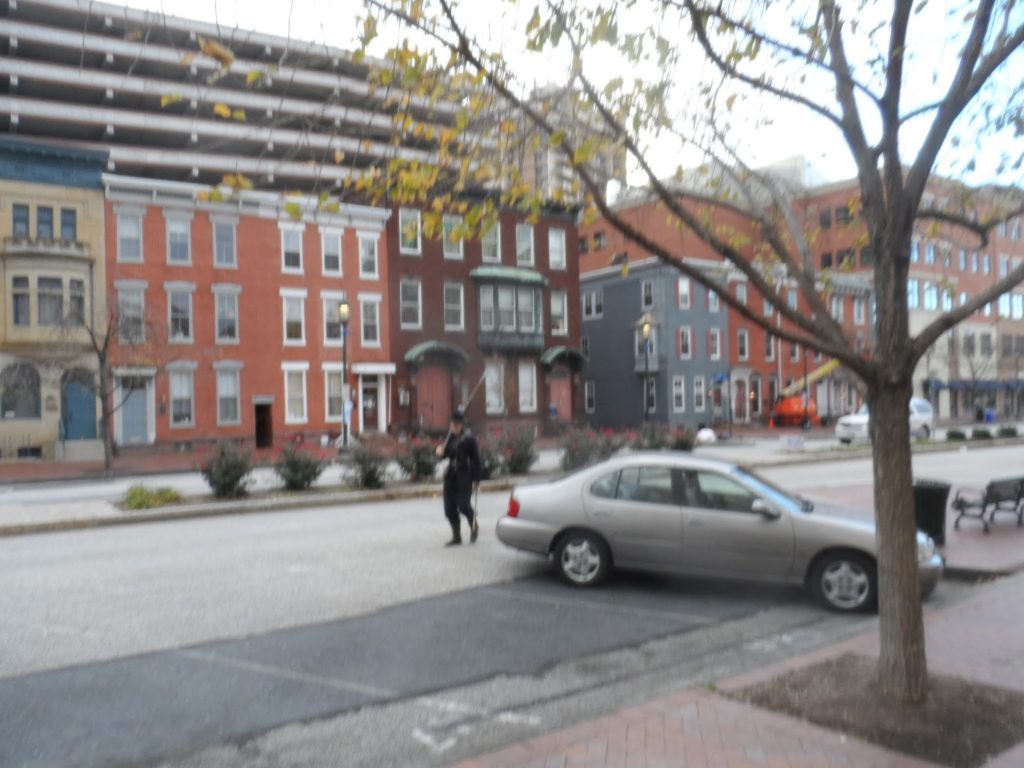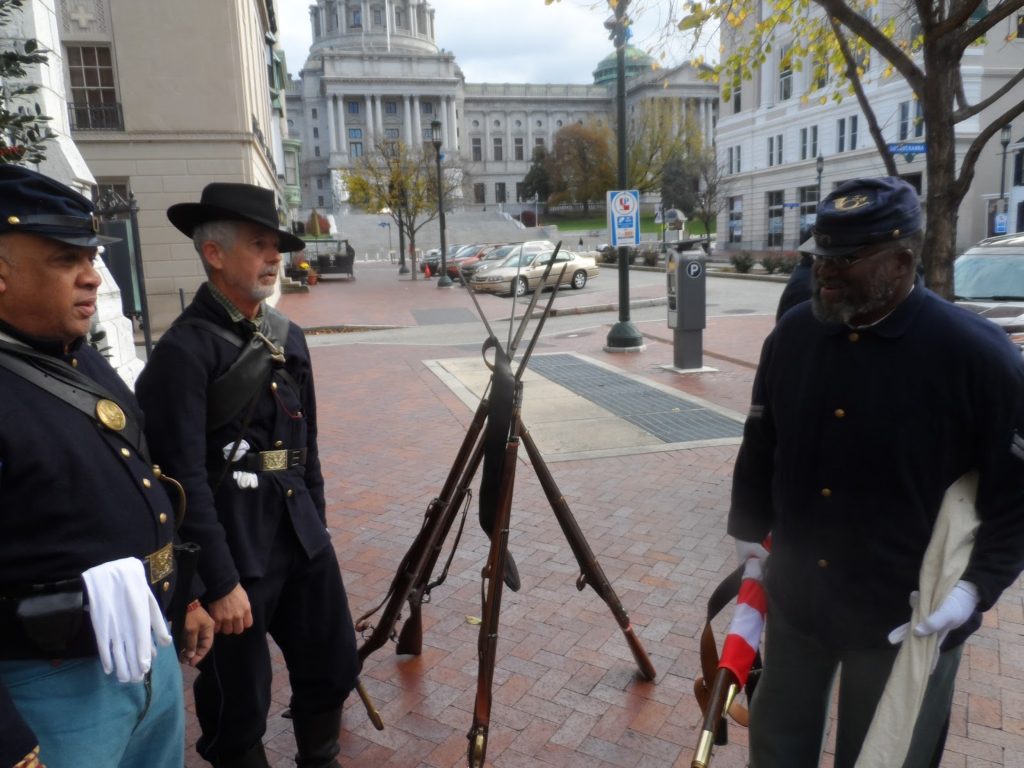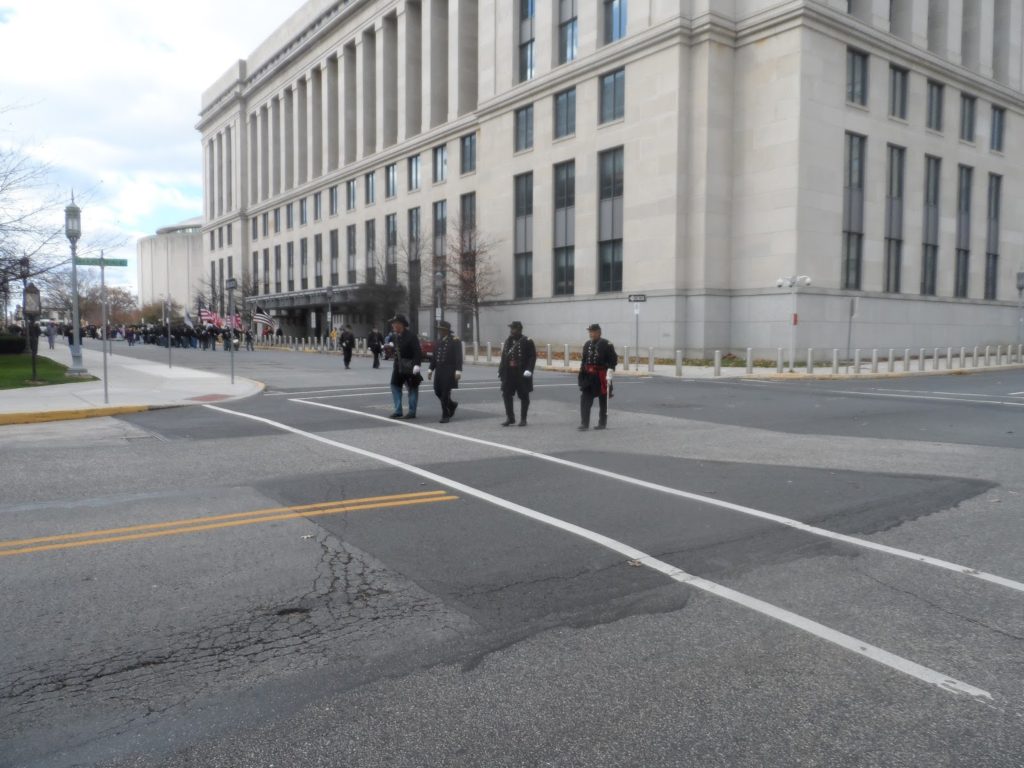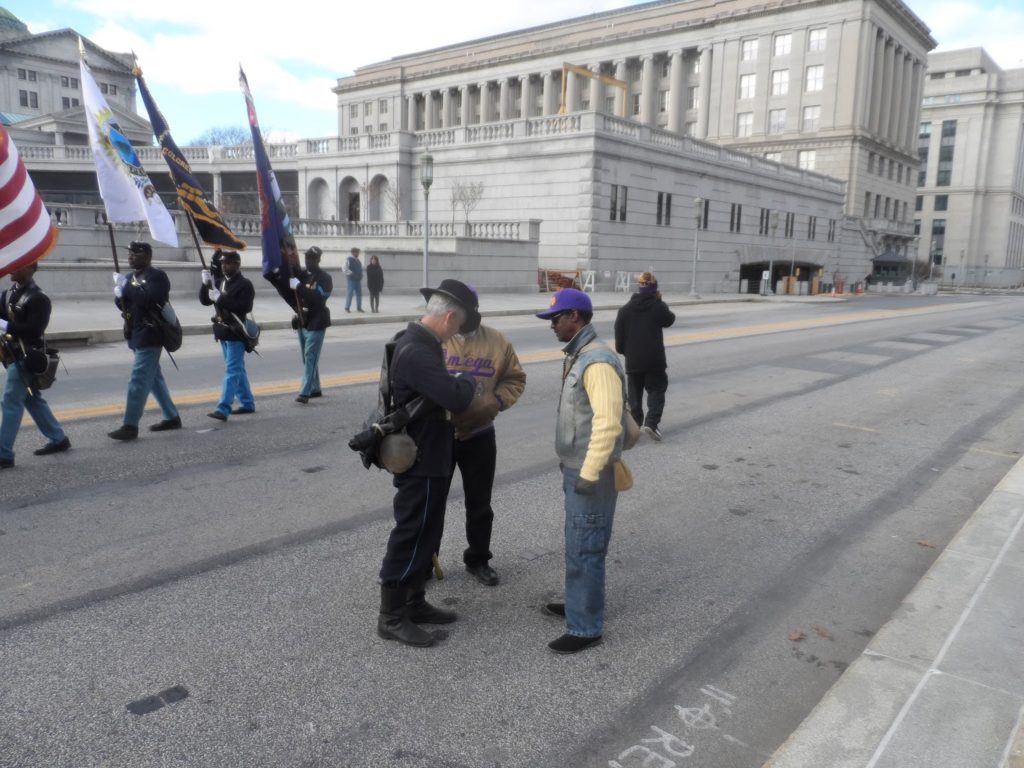I met Michael Schaffner at the kick-off point of the sesquicentennial of the Harrisburg Grand Review of the United State Colored Troops in November. He and I had both showed up early so we had some time to chat. I was there as somebody who was going to watch the parade which sadly was the smallest group. Mike was marching as a reenactor. He is with Company B of the 54th Massachusetts which is based in Washington DC. Mike has done a lot of civil war reenacting, but now that he portrays an officer in the 54th, he delivers a fiery speech on the contribution of black troops to Union victory, not only directly but also from the inspiration they provided to the South’s labor force to head for freedom.
Above you can see him arriving early carrying somebody else’s musket
Pre-parade with some of the men.
In the parade
and post parade.
Any way we became facebook buds and just recently I read a rather passionate screed he wrote on the subject of Confederate monuments, which he gave me permission to publish:
Yesterday I made a semi-flip comment about the Confederate monuments in New Orleans, but the truth is I feel quite seriously that towns have a perfect right, even obligation, to purge themselves of these grotesque glorifications of a shameful cause. The arguments for keeping the Confederate monuments in New Orleans strike me as weak, even disingenuous.
As one example we can look at the Beauregard monument: in the statue of “native son” Beauregard, he appears not as a young officer in Mexico before the war, or as a prominent businessman after, but as a commander in the forces of a racist rebellion against the republic – *our republic, the one whose flag we all pledge allegiance to.
Moreover, the statue was raised after most of those soldiers were dead, in a period bracketed by Plessy v. Ferguson and the founding of the SCV on one hand, and on the other by the apogee of the KKK. Rather than an innocent commemoration of the past, it served as active propaganda for restoration of a violently racist regime.
And Lee’s monument has no more reason to stay in New Orleans than the one our soldiers took down of Saddam Hussein in Baghdad.
These excrescences of white supremacy are not something that can be ameliorated by interpretive plaques. If plaques had the power of monumental sculpture no one would bother with the expense of casting bronze. They should come down, to be replaced by monuments to people who made positive contributions to the city.
There shouldn’t be a problem finding those – New Orleans has been around for two centuries and the Confederacy was there for scarcely a year.
——————————–
Personally I would rather see more monuments while leaving the existing ones in place, so we could all have these massive “WTF?’s and then reflect on what we are doing right now that might look different in 100 years. In the comment section of the post, Mike added something that gives some more context.
We need to look at monuments on a case by case basis, but in that light having statues to Lee, Davis, and Beauregard in New Orleans, but not to Farragut, Butler, or any of the enslaved peoples of the “black trail of tears” does a disservice to both history and the present.
In case you did not catch the reference in the title, here it is. It is a clip I may have overused but I find it does not get old.
When we were chatting pre-parade,Mike cleared up for me something that I had been puzzling about. Thanks to Governor Andrews insistence. the 54th Mass was never redesignated, but it was managed after mid-1863 as part of the United States Colored Troops.
During the Civil War the regular army remained small. West Point had less than 100 graduates per year pre-war. The officers of the bulk of the locally raised units were often selected on the basis of local politics and prestige. Not so the officers of United States Colored Troops (overwhelmingly white) who were selected by competitive exam. Schools that prepared them are considered the precursor for the modern Officer Candidate Schools.



































































































